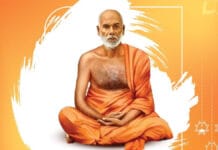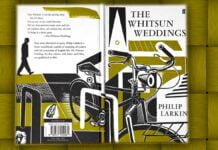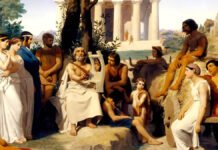Expressionist theatre emerged as a radical movement in early 20th-century Germany, challenging traditional forms of realism and naturalism. It sought to convey the inner emotional state of characters rather than depicting objective reality. This theatre style was deeply influenced by Expressionism in visual arts and literature, focusing on distorted representations, heightened emotions, and symbolic storytelling to critique the anxieties of modern life, urbanisation, and the mechanisation of society.
Historical Context and Origins
During social unrest, industrialisation, and war, expressionist theatre developed in Germany between 1910 and the 1920s. The movement was shaped by several influences, including German Romanticism and Symbolism, which emphasised the subjective experience of reality. The philosophical works of Friedrich Nietzsche and Arthur Schopenhauer contributed to the questioning of conventional morality and existence, themes that became central to Expressionist drama. The horrors of World War I further intensified the movement’s focus on human alienation and existential crises. Modernist art movements such as Futurism, Dadaism, and Surrealism, which rejected realism in favour of abstraction and emotion, also shaped Expressionist theatre.
Several key playwrights were instrumental in the development of Expressionist drama. In his play From Morn to Midnight (1912), Georg Kaiser examined capitalism’s dehumanising effects. In Man and the Masses (1921), Ernst Toller depicted revolutionary struggles and oppression. Despite predating the movement, August Strindberg’s The Ghost Sonata (1907) contained elements that influenced later Expressionist works. Oskar Kokoschka’s Murderer, the Hope of Women (1909) explored themes of gender conflict and violence in a highly stylised manner. By the late 1920s, the Expressionist movement began to decline due to the rise of Brecht’s Epic Theatre and the changing political landscape in Germany. However, its impact on modern theatre remained profound.
Characteristics of Expressionist Theatre
Expressionist theatre was distinguished by its emphasis on subjective and psychological themes. Instead of depicting reality as it is, Expressionist plays focused on characters’ inner turmoil, often presenting distorted, exaggerated narratives to reflect emotional and psychological distress. Themes of alienation and isolation were frequently explored, with individuals portrayed as struggling against an oppressive society. Many Expressionist works incorporated dream-like sequences, representing the subconscious mind and the chaotic nature of modern existence. Another recurring motif was the quest for spiritual awakening in an increasingly mechanised and impersonal world.
Expressionist theatre rejected naturalistic and realistic staging in favour of highly stylised, abstract sets. Distorted and exaggerated settings were used to reflect the emotional state of characters, often creating a nightmarish atmosphere. Instead of realistic backdrops, jagged structures and fragmented scenery conveyed themes of alienation and disorder. Symbolic props and costumes played a crucial role in these productions, with objects taking on metaphorical meanings. For instance, oversized doors or towering buildings were often used to represent power structures and oppression. Lighting was another critical element, with strong contrasts between light and shadow enhancing the dramatic intensity of performances.
Acting and speech in Expressionist theatre were highly stylised and deliberately unnatural. Actors used exaggerated gestures and movements to convey emotions, often adopting jerky or mechanical actions to represent characters trapped in oppressive systems. Speech was delivered unnaturally, sometimes shouted or sung, rejecting conversational realism. Many plays featured nameless or symbolic characters, such as “The Man” or “The Worker,” representing universal figures rather than individual personalities. Expressionist plays often had a fragmented or episodic structure, eschewing linear storytelling in favour of a series of disconnected, symbolic scenes that heightened emotional impact.
Expressionist theatre also focused on the multimodal nature of graphic representation within performances. It explored how artists connected with audiences on a human level through character design, facial expressions, and body language. The structure of visual language in Expressionist works followed patterned ways in which different types of signs combined to create an even larger meaning.
Influence on Modern Theatre
The impact of Expressionist theatre extended far beyond its initial period of prominence. It laid the foundation for several avant-garde movements and influenced major theatre practitioners. Bertolt Brecht’s Epic Theatre, which employed alienation techniques to make audiences think critically rather than become emotionally absorbed, was influenced by Expressionist staging and storytelling methods. Samuel Beckett’s Absurd Theatre, particularly works like Waiting for Godot, also drew from Expressionism’s rejection of realism, using fragmented narratives and existential themes.
The techniques and aesthetics of Expressionist theatre had a profound impact on German cinema, particularly in the silent film era. Films such as The Cabinet of Dr.Caligari (1920) borrowed heavily from Expressionist theatre’s use of distorted sets, high-contrast lighting, and exaggerated performances. This influence carried over into later cinematic styles, including film noir and horror cinema. Expressionist theatre also paved the way for postmodern theatrical experiments, such as the works of director Robert Wilson, who incorporated slow-motion acting and abstract visual elements.
Expressionist theatre revolutionised drama by shifting the focus from external reality to inner experience. Its intense emotions, distorted visuals, and symbolic storytelling provided a powerful critique of modern society. Although its influence waned by the 1930s, Expressionist theatre left a lasting legacy in theatre, cinema, and performance art. It continues to inspire experimental and politically charged drama, reaffirming its place as one of the most transformative movements in theatre history.






























